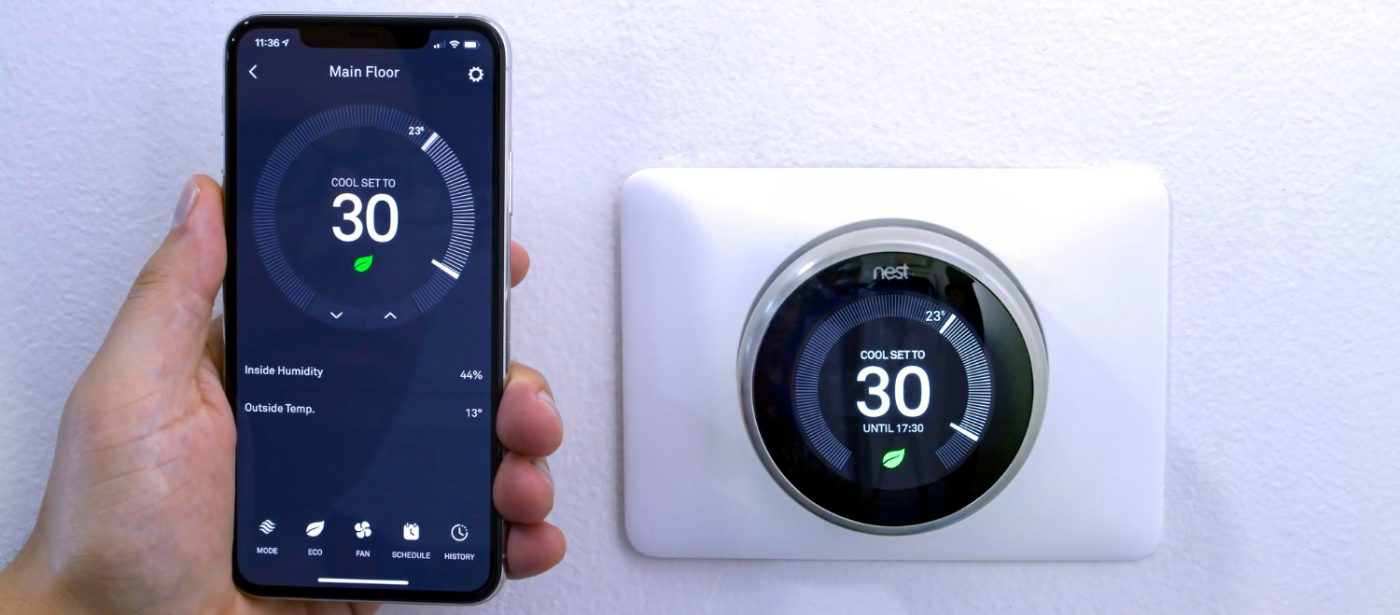Proper thermostat installation is crucial for maintaining a comfortable indoor environment and ensuring your heating and cooling systems operate efficiently. However, many homeowners often overlook key factors during the installation process, resulting in suboptimal performance and higher energy costs. Recognizing and avoiding these common mistakes can save you time, stress, and money in the long run.
Thermostat installation might seem straightforward, but several important steps must be followed to ensure everything works correctly. Even minor errors can have significant impacts, affecting your home’s comfort levels and system efficiency. Understanding these potential pitfalls is the first step towards avoiding them in your own home.
Whether you’re upgrading to a smart thermostat or replacing an old one, it’s essential to be aware of these common installation mistakes. Our professionals at Stafford Home Service Inc can assist with expert installation and ensure your system operates at peak efficiency. Avoiding common mistakes will help you achieve a comfortable and energy-efficient home.
Incorrect Placement of the Thermostat
The placement of your thermostat plays a crucial role in its performance. Incorrect placement can lead to inaccurate temperature readings and inefficient operation of your heating and cooling systems. Ideally, your thermostat should be installed in a central location where it can accurately measure the average temperature of your home.
Avoid placing your thermostat near heat sources such as ovens, stoves, or direct sunlight. These heat sources can cause the thermostat to read a higher temperature than the actual room temperature, prompting your air conditioning system to overcompensate. Similarly, placing the thermostat near drafts or exterior doors can cause inaccurate readings, leading to frequent and unnecessary cycling of your furnace or air conditioner.
Another key consideration is the height at which the thermostat is installed. It should be placed at eye level, approximately five feet above the floor. Installing it too high or too low can result in misleading temperature readings, as the air temperature can vary at different heights.
Correct placement ensures that your thermostat accurately reflects the true temperature of your living space, allowing your HVAC system to function efficiently and maintain a comfortable environment.
Improper Wiring Connections
Wiring mistakes are a common issue during thermostat installation. Incorrect wiring can prevent the thermostat from communicating effectively with your HVAC system, leading to malfunctioning or even damage. Understanding the wiring configuration and following the manufacturer’s instructions are essential to a successful installation.
First, turn off the power to your HVAC system to avoid any electrical hazards. Next, identify the existing wires connected to your old thermostat. Most thermostats use a standard color-coding system: red (power), white (heat), yellow (cooling), green (fan), and blue or black (common wire). However, configurations can vary, so refer to the specific wiring diagram provided by the thermostat’s manufacturer.
When connecting the wires to the new thermostat, ensure each wire is securely fastened in the appropriate terminal. Loose connections can cause the thermostat to lose power or send incorrect signals to the HVAC system. If your new thermostat requires a C-wire and your existing setup lacks one, you may need to run a new wire or use an adapter.
Avoiding wiring errors requires careful attention and adherence to instructions. If you’re unsure about handling electrical components, our professionals can install your thermostat safely and correctly, ensuring optimal performance and longevity of your system.
Ignoring Compatibility Issues
Compatibility is a significant factor in thermostat installation. Not all thermostats work with every type of HVAC system. Installing an incompatible thermostat can result in malfunctioning or complete system failure. Before purchasing, check the compatibility of the thermostat with your HVAC system.
Start by identifying the type of HVAC system you have, whether it’s a single-stage, multi-stage, or heat pump system. Each type requires a thermostat designed to handle its specific functions and controls. For example, a single-stage thermostat will not work efficiently with a multi-stage system as it cannot manage the complexities of varying heating or cooling levels.
Additionally, older HVAC systems may not be compatible with modern smart thermostats that require Wi-Fi or a C-wire for continuous power. Make sure your system supports these features before attempting installation. Consult the user manual or contact the manufacturer if you have any doubts.
Proper compatibility ensures your thermostat can communicate effectively with your HVAC system, optimizing performance and avoiding unnecessary repairs. If you’re uncertain about compatibility, our technicians can help you choose the right thermostat for your system and handle the installation for you.
Skipping Professional Calibration
Calibration is a crucial step in thermostat installation that ensures your device accurately reflects the temperature of your home. Skipping this step can result in improper temperature readings and inefficient operation of your HVAC system. Professional calibration ensures that your thermostat functions correctly from the start.
To calibrate a thermostat, it’s essential first to compare its temperature reading with a reliable thermometer placed nearby. A discrepancy of more than a few degrees indicates a need for calibration. Follow the specific calibration instructions provided by the thermostat’s manufacturer to make necessary adjustments. This usually involves accessing the settings or using a combination of buttons to fine-tune the temperature reading.
Professional calibration goes beyond just matching temperature readings. Our professionals check for the proper functioning of all features, ensuring that programming, sensors, and connectivity work seamlessly. This holistic approach guarantees that your HVAC system operates at peak efficiency, providing consistent comfort throughout your home.
Skipping professional calibration can lead to ongoing issues, requiring further adjustments and potentially costly repairs. Our technicians have the expertise to calibrate your thermostat correctly, ensuring accurate performance right from the start.
Conclusion
Avoiding common thermostat installation mistakes is crucial for ensuring the optimal performance of your HVAC system. Proper placement, correct wiring, compatibility, and thorough calibration are essential steps in the process. Each of these factors plays a vital role in maintaining a comfortable and energy-efficient home environment. If you’re unsure about any part of the installation process, our professionals are ready to assist you.
For expert thermostat installation in St Louis Park, contact Stafford Home Service Inc. Our experienced team will ensure your system operates smoothly and efficiently, providing peace of mind and a comfortable home. Reach out to us today for all your residential electrical, heating, air conditioning, home entertainment, and home security needs!








